| | Definitions | Background | Why consider alternative date seeding? | Current information | Recommendations | Spring assessment | Acknowledgements
Seeding canola very early in the spring or before fall freeze up has several advantages. It spreads out farming operations. It may also minimize the impact of devastating diseases, insects, frosts or periods of extreme heat. These seeding dates also advance maturity and harvest (see Figure 1).
Alternative date seeding, however, requires careful management. Studies and practical experience on these seeding concepts have led to the recommendations in this factsheet.
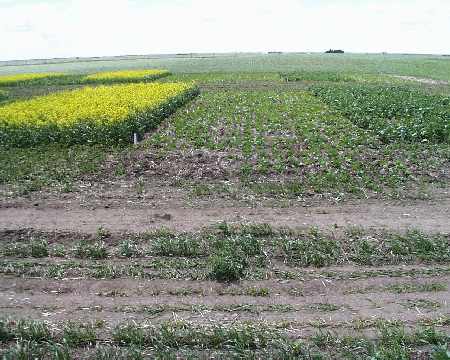
Figure 1. fall seeded canola (left), May 15 seeding (centre) and April 27 seeded canola (right).
Photo taken June 20.
Definitions
The following terms describe alternative date seeding of spring canola:
- fall seeding (also known as dormant seeding or frost seeding) generally refers to seeding in autumn before fall freeze up.
- early spring seeding means seeding generally in April or early May.
Background
Thirty years ago, a few growers tried fall seeding because they had often seen volunteer canola do well in the spring. However, premature (fall) germination and lack of weed control options often resulted in the failure of these fields.
Recently, however, herbicide tolerant canolas have been introduced that reduce the problem of uncontrollable weeds. Also, direct seeding technology and new seed coatings can reduce inappropriate germination, making alternative date seeding a commercial reality.
Why consider alternative date seeding?
The advantages as well as the disadvantages to fall and early spring seeding are described in Table 1. Producers should consider how these factors affect their operation before commencing any alternative date seeding.
Current information
Table 2 summarizes the timing of growth stages under three different seeding dates. These figures were obtained from three years of data at the Agriculture and Agri-Food Canada Research Station at Scott, Saskatchewan. Relative yields from fall and early spring seeding dates from research sites in Alberta are shown in Figure 2.
Table 1. Advantages and disadvantages of alternative date seeding
| Advantages | Disadvantages |
1. Early maturity
· maturity is usually advanced by 2 to 3 weeks
· reduced risk of fall frost* and crop stress may improve seed size and may lower green seed content
· Argentine varieties can be reliably grown in short season zones
· later maturing varieties can be grown
· oil content can be 1 to 2 per cent higher
· may flower and set seed before typically hot, dry periods in summer
· marketing opportunities may be improved with early harvesting
· winter cereals may be sown at the correct time
| 1. Environmental risk
· fall or winter germination could reduce spring plant populations of fall seeded crops where chinooks are common. South facing slopes and hilltops are more prone to premature germination, particularly under adverse environmental conditions such as lack of snow cover. Early spring seeding may be preferable in these areas.
· spring frosts* may damage crops, regardless of seeding date
· crop loss due to environmental conditions may result in additional costs due to the need to reseed (see spring assessment section)
· timing of fall seeding without the use of a fall germination inhibitor is difficult to predict from year to year
· thin stands may not mature as early or as uniformly as denser stands
|
2. Reduced losses
· reduction in damage by infestations of insects such as diamond back moth, bertha army worm and lygus bug. These pests normally attack plants late in the growing season
· shorter plants may reduce the risk of lodging and resulting diseases
· diseases such as sclerotinia, blackleg and alternaria may have a reduced effect on seed yield and quality
| 2. Risk of pest infestations
· cabbage seed pod weevil is becoming a pest in canola. Its life cycle favours infestations of early maturing canola plants
· flea beetles may be a more serious problem with early emerging canola. Field scouting is recommended (see spring assessment section)
|
3. Moisture management
· early growth increases utilization of spring moisture
· fall seeding may be possible in low areas that are not accessible in springtime
· spring soil moisture losses due to tillage are eliminated by fall seeding, and may be reduced by early spring seeding
| 3. Site selection limitations
· successful stand establishment is difficult in areas prone to long term standing water
· exposed areas should not be used, or should have standing stubble for greater protection
· if not properly managed, soils predisposed to crusting make it more difficult to establish an adequate plant population
|
4. Weed control
· early emerging canola can often compete better against later emerging weeds
· herbicide tolerant varieties allow for more weed control options
| 4. Costs of weed control
· herbicide tolerant canola may have some extra associated costs, but net expenses may not increase
· low plant stands are less competitive with weeds and may require more intensive management
|
5. Workload spread out
· production efficiencies can result from spreading out seeding, spraying and harvesting operations
| 5. Operations may coincide
· spraying may need to be done during normal spring seeding, harvest during haying, etc.
|
* To assess the risk of frost happening in your area, refer to Agdex 075-2 Freezing Date Probabilities.
Table 2. Ranges of critical growth stages for different seeding dates at Scott, Saskatchewan
| Growth stage | Fall seeded | Early spring seeded | Mid-spring seeded |
| Seeding date | October 27 - October 31 | April 25 - May 2 | May 9 - May 23 |
| Emergence | April 23 - May 1 | May 9 - May 12 | May 18 - May 29 |
| 50% flowering | June 11 - June 16 | June 21 - June 27 | June 23 - July 9 |
| Mature to swath | July 25 - August 3 | July 29 - August 11 | August 9 - August 19 |
Similar dates are observed in Alberta. Source: Kirkland and Johnson
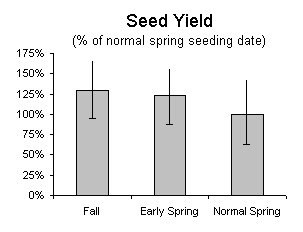
Results are summarized from 1996-2000 Alberta research trials. Fall and early spring seeding averages 23 to 29 per cent higher yields than normal spring seeding. Vertical lines illustrate the range of yields.
Figure 2. Relative seed yields for fall, early spring and normal spring seeding dates.
Recommendations
Based on a number of years of testing and producer experience, it is now known that several key steps must be followed to maximize emergence for a uniformly established stand:
Field selection
- avoid low spots that drown out.
- windswept slopes may be a problem.
- to gain experience, limit acreage seeded in the first year of alternative date seeding.
Variety and herbicide selection
- herbicide tolerant varieties should be considered depending upon weed spectrum. Fall or spring control of winter annuals in fall seeded crops is often required. Repeat herbicide applications may be necessary when plant densities are low. Timing
- if fall seeding is done without a germination inhibitor, wait until the soil temperature is not conducive to germination. Typically, this period is late October, immediately before the onset of winter and season-long soil freeze-up.
- if fall seeding with a germination inhibitor, follow label directions. Commercially-available products at the time of publication extend the seeding window to three weeks before freeze-up.
- if early spring seeding, plant as early as the soil can be worked. Early emerging plants usually acclimate to cold and tolerate frosts better than plants emerging in warmer conditions.
Fertility
- follow soil test recommendations for spring canola, including proper placement, a balanced nitrogen/sulphur ratio and any other required macro or micro-nutrients (see Agdex #531-3, · Minerals for Plants, Animals and Man).
- phosphorus should be added in-furrow to promote emergence.
Seeding rate
- use a recommended to slightly higher seeding rate.
Seeding method
- seed in a manner that permits good seed-to-soil contact for optimum springtime emergence
- consider direct seeding to maintain snow cover and to minimize untimely germination.
- fall seeded crops should not be broadcast seeded as this method tends to have reduced seed-to-soil contact.
Residue-preseeding management
- plan your residue management before you get on the combine. For more information, refer to Agdex 570-4 · Residue Management for Successful Direct Seeding
- consider opener limitations when managing and distributing crop residue. This factor may require straw removal or heavy harrowing.
- leave as much stubble standing as possible to minimize hairpinning.
- spray perennial weeds if necessary
Seeding depth
- seed ½ inch to 1 inch deep. In surveys of Alberta alternative date seeders, it was found that the majority of the unsuccessful attempts were due to excessive seeding depth.
- use treated seed to minimize the impact of seedling diseases during germination and emergence.
- with fall seeding, be aware of using seeding equipment that creates ridges and valleys. Winter soil slumping could increase net seeding depth, causing emergence problems.
Spring assessment
Expectations of field appearance need to change when looking at alternative seeding date canola stands:
Emergence and density
Fall and early spring seeded crops often take more time to emerge. Fall seeded canola typically has lower spring densities than spring seeded canola; however the plasticity of canola permits great yield compensation, as shown in Figure 3.
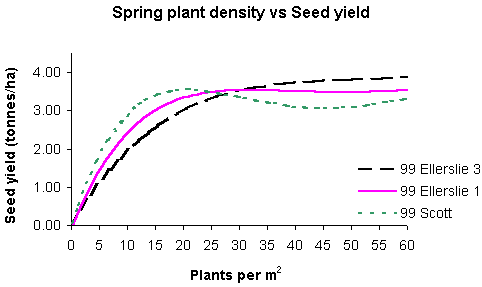
Data from Ellerslie, AB, and Scott, SK, 1999 trials
Figure3. Maximum seed yields in fall seeded canola are reached at low densities. By comparison, a minimum of 60 plants per m2 is recommended for normal spring seeding dates.
Uniform densities as low as 10 to 15 plants per square metre (1-1.5 plants per square foot) typically yield as well as more heavily populated mid-spring seeded canola (Figure 4 and 5).
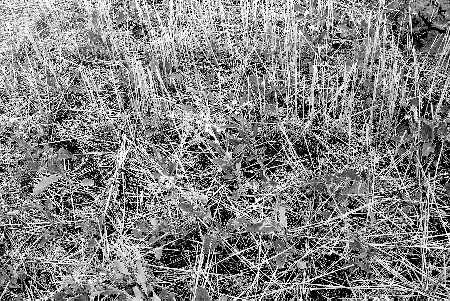
Figure 4.This plant stand averages 2 per square foot, more than enough for a good yield.
Such fields look poor and barren at early growth stages.
Photo taken June 8, 2000.
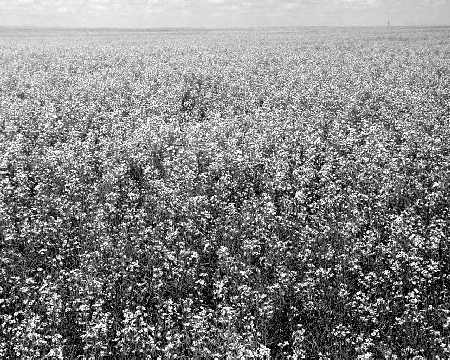
Figure 5. Same field as Figure 4, with 2 plants per square foot.
Photo taken one month later, July 7.
Proper field scouting for emergence is critical for stand assessment. To assess plant population, use a standard-sized measuring device of at least a quarter square metre in size. Walk beyond the headlands, and take a minimum of 25 random measurements spaced at least 20 metres apart. If a thorough field survey shows that reseeding is necessary, consider leaving a portion of the field as a comparison to the reseeded portion. Contact your provincial specialist to aid in this decision.
Growth habit
Alternative date seeded canola may not look the same as mid-spring seedings. Plants form buds at the 5 to 7 leaf stage and begin blooming without forming a dense rosette of leaves. The crop canopy may continue to be more open, and the crop may be up to 20 per cent shorter throughout the growing season. Lodging tends to be reduced when compared to mid-spring seeded crops.
Frost
Frost assessments should not be conducted immediately after a damaging frost (Figure 6). A minimum of five days after frost is required before a valid assessment of plant survivability is possible. At that time, the presence of a green growing point is a good indication of recovery. A healthy stem below this growing point confirms that assessment. Surviving plant densities need to meet the minimum of a green growing point.
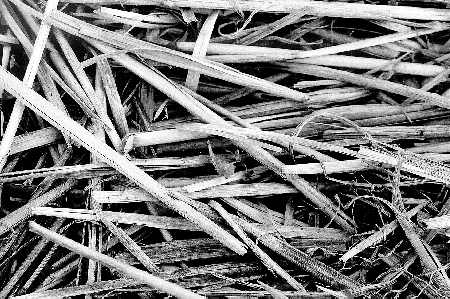
Figure 6. Severe spring frosts are more damaging to plants that have heavy surface residue beneath them.
Herbicide application
Research indicates that early weed control minimizes yield loss. Alternative seeding date canola may need to be sprayed earlier than one might expect. The crop and weeds may both be at the correct growth stage to spray by mid-May. Time spraying operations for optimal weed control according to the label recommendations. Consider both growth stage and temperature. Avoid herbicide application during periods of plant stress, such as just after a frost.
Flea beetles
Scout for flea beetles. Adult flea beetles emerge in April and early May. When air temperatures are greater than 15 degree C, flea beetles become active. Foliar application of insecticide may be necessary.
For more information:
If you would like to discuss or learn more on alternative date seeding, please contact Keith Topinka (780) 422-0891 or the Ag-Info Centre 1 866 882-7677.
Acknowledgements
Much of the long term research on fall and early spring seeding has been conducted by K.J. Kirkland and E.N. Johnson with Agriculture and Agri-Food Canada, Scott Research Farm, Scott Saskatchewan. Support for the Alberta research currently being conducted has come from a wide variety of sources, including the On-Farm Demonstration Program of Farming for the Future, the Alberta Canola Producers Commission, Ducks Unlimited, Grow-Tec Inc., the Alberta Reduced Tillage Association, as well as many producers and research associations. Support for the Saskatchewan studies was provided by the Saskatchewan Canola Development Commission. Factsheet prepared in collaboration with Saskatchewan Agriculture and Food, and Manitoba Agriculture.
Source: Agdex 149/22-1. Revised September 2000. |
|